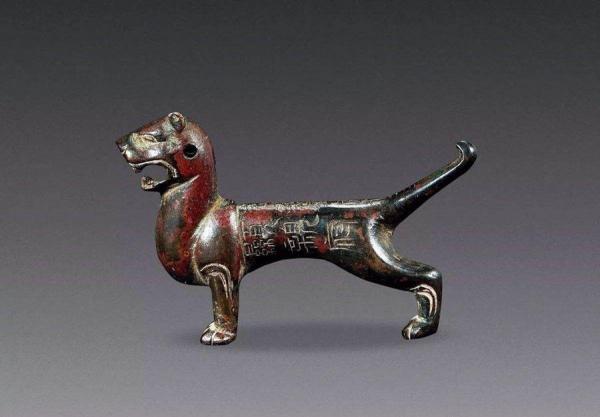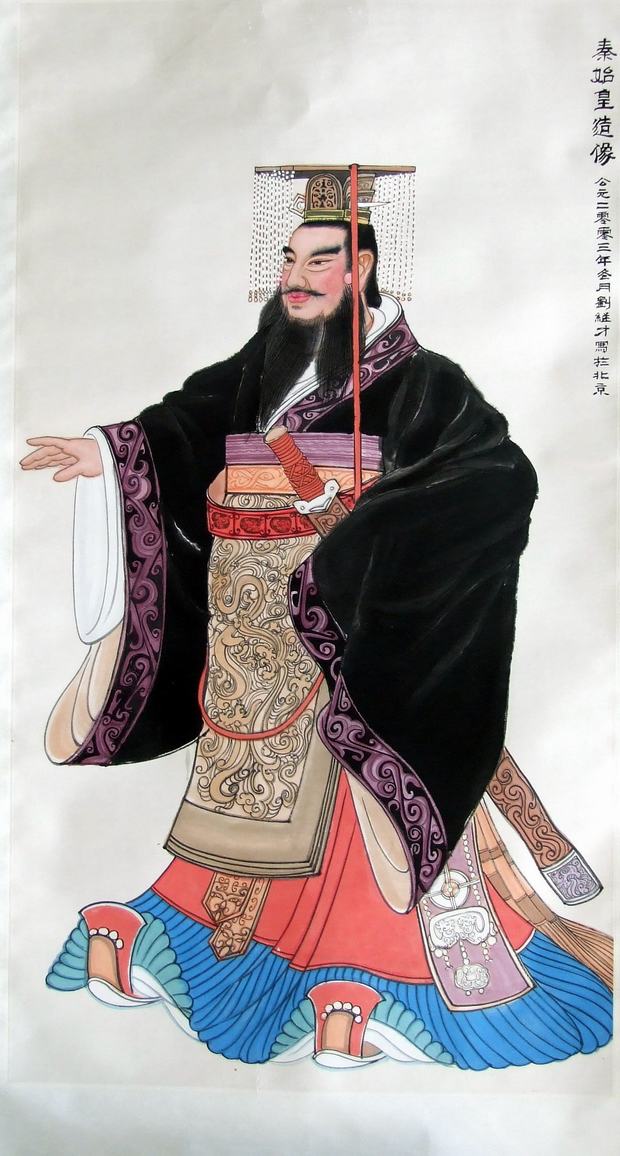Qin Dynasty
During Qin Dynasty period (from 221 BC to 207 BC), China came into unification for the first time and under reign of the first emperor Qin Shihuang. Its government seated in Xianyang (close to modern Xi'an). Although Qin Dynasty survived for only 15 years, it had exerted such great influence on the following dynasties that it held an important role in Chinese history. Many administrative institutions were developed at that period and have remained features of the Chinese state for the following 2000 years.
Qin Dynasty Facts
In Chinese: 秦朝
Time period: 221 BC to 207 BC
Capital: Xianyang
Population: Between 25 and 30 million (210 BC)
Main ethnical groups: Han
First Emperor: Qin Shihuang
Area: 3.4 million sq km (210 BC)
The organization of central government: three councillors and nine ministers
How did Qin Rise?
The Qin people were part of the Hua Xia (Han) westward migration. After protracted wars for hegemony during the Spring and Autumn Period (770 BC-476 BC), the number of vassal states within the Zhou Dynasty was greatly reduced. By 386 BC, the pattern of Seven Warring States formed.
In the early Warring States period, Qin was the poorest of the seven states. During the period of Qin Xiaogong, Shang Yang, a man of Wei State, went to Yueyang, the capital of Qin, to help Him carry out reform. The core ideas of Shang Yang's reform include severe punishment, weak people, restraint of commerce and travel ban. It quickly transformed Qin from an insignificant and weak state in the West into a military power. It took an important step towards the rise of the Qin Dynasty and gradually made Qin the central power to achieve the unification of China.
Since Shang Yang's reform, the troops of Qin were stronger and stronger. Weapons had been constantly improved. There were three types of troops, infantry, chariots and cavalry. The number of the army reached "one million with armour, a thousand chariots and ten thousand horses". Famous military strategists and generals such as Weiliaozi, Bai Qi, Wang Jian, Meng Tian and others also part of the reasons why Qin rose.
How Long did Qin Dynasty Last? And How did it Fall?
At the end of the Warring States Period, Ying Zheng destroyed the states of Han, Zhao, Wei, Chu, Yan and Qi successively, thus ending the feudal state dominated by feudal vassals and beginning the autocratic centralized Han unified state. In 221 BC, Ying Zheng proclaimed himself emperor, known historically as The First Emperor of Qin.
In the ten years after the unification of Qin, Qin Shihuang maintained a huge army, established a huge bureaucracy, carried out many large-scale wars, and completed a huge national defense construction and civil construction.It is estimated that the population of the country at that time was more than ten million, and more than two million men, that is, more than a third of the men in their prime, were serving in the army.
In 210 BC, Emperor Qin Shihuang died of disease on a sand dune (now Guangzong County, Hebei Province) during a business trip. His son Huhai ascended the throne as the second Emperor of Qin.
During the Period of the Second Qin Dynasty, peasants lived a very miserable life, dressed in cattle and horses, eating meat from dogs, and were often forced to flee to the mountains and riot by violent officials who tortured them.
All these situations show that the tyranny of the urgent government had intensified social contradictions, and heralded the fall of Qin Dynasty.
Although the Qin dynasty had great influence in history, it only unified for 15 years. In 209 BC, Chen Sheng and Wu Guang raised an army and started a peasant uprising, which was echoed by the whole world. Liu Bang and Xiang Yu launched an army against Qin in Jianghuai area.
In 207 BC, the Qin Dynasty fell.

Qin Dynasty Emperors – with Timeline Periods
Last for only 15 years, Qin Dynasty has three emperors, namely, Qin Shihuang, the first Emperor of Qin Dynasty, the Second Emperor of Qin and King Ziying of Qin.
| Emperor | Name of the Emperor | Perio of Living | Period of Reign | Reign Years | Remarks |
| Emperor Qinshihuang | Ying Zheng | 259-210BC | 221-210BC | 12 | The first emperopr of China in the feudal age Buried in Mausoleum of First Qin Emperor |
| The Second Emperor of Qin | Huhai | 230-207BC | 209-207BC | 3 | The 18th son of Emperor Qinshihuang |
| Emperor Ziying | Ziying | ? | 207BC | 46 days |
Qin Dynasty Achievements and Inventions
Qin emphasized strict adherence to a legal code and the absolute power of the emperor. Qin emperor contributed much to the development of his country by launching a series of effective measures, including the concept of a centralized government, the unification of the legal code, written language (xiao zhuan), measurement, and currency of China, which provided convenient conditions for economic and cultural development, and promoted the development of a unified country.
Emperor Qin Shihuang Burn Books and Bury Alive Confucian Scholars
Qin Shi Huang was one of the most controversial figures in Chinese history. Despite of Qin emperor's contributions to the country, he was more of a tyrant. In order to silence the criticism of the imperial rule, he burnt many books that he thought would affect people's thinking and even worse, he buried 460 scholars alive after learning about their discussion of his cruelty.
In 213 BC, the First Emperor of the Qin ordered all counties to ban The Book of Songs and the Book of History, as well as the books of the masters' hundred schools, and burned them within 30 days.
In the following year, Lu Sheng and other necromancers could not seek elixir for Emperor Qinshihuang again and fled for fear of punishment. Qinshihuang sent the imperial historian to spy on the necromancers in Xianyang. Some of the necromancers who sought immortal medicine for Qinshihuang made libelous remarks. Qinshihuang was so angry that he ordered a search for the Confucian scholars in Xianyang city. Later, during the interrogation process, the Confucian scholars denounced each other, and a total of more than 460 people were reported. Qinshihuang ordered all 460 people to be buried and killed.
"Burning books and burying scholars" was a policy carried out by the Qin Dynasty for the stability and unification of state power, and also a destruction of Chinese culture at that time. The policy of "burning books" was aimed at the books and cultural relics at that time. Only a large number of precious documents which were beneficial to the people's livelihood and the ruling of the State were kept. Since then, a hundred opinions of the Spring and Autumn Period and the Warring States period were severely destroyed. The policy of “burying scholars” was also the first large-scale arrest of intellectuals by state power recorded in Chinese history.
"Burning books and burying scholars" is one of the most important reasons why Qin Dynasty was so unpopular.
What is the Qin Dynasty best known for? – Terracotta Warriors & Qin Dynasty Great Wall
Terracotta Army
During his reign, Emperor Qin Shihuaang imposed heavy taxes, hard labor, military service and rigorous law on the masses, to as to build luxurious palaces, Terracotta Warriors and Horses, the Great Wall and his own mausoleum.
Qin Shi Huang finally unified China, mainly based on the efforts of six sovereigns, and more importantly Shang Yang's reform. Qin Shi Huang himself was a firm legalist. Although Qin Shi Huang built tombs early, he did not intend to restore human sacrifice. So he adopted the technology of terracotta warriors and made tens of thousands of terracotta warriors in the likeness of the elite Qin soldiers.
The real purpose of the Terracotta Warriors was to have an army to protect the tomb afterlife, or to bury himself with an army of terracotta warriors. Emperor Qin Shihuang was a hero. He was the most precious man in the world. After his death, he wished to lead thousands of troops and horses to fight the enemy to the death.
Qin Shihuang used terracotta warriors instead of living martyrs, which reflected that living martyrs were not the mainstream at that time. According to some historians, Terracotta Warriors also reflect the emperor's benevolence. He was a patriotic emperor who did not want to sacrifice his troops for burial.

The Great Wall of China
Besides the Terracotta Warriors and Horses, the most famous building left from the Qin Dynasty is the Great Wall.
In order to maintain and consolidate the unprecedented security of the empire, especially to resist the Huns in the north, Emperor Qin Shihuang took a series of major strategic measures for national defense construction and border defense, one of which was the large-scale construction of the Great Wall.
In the 32nd year of Emperor Qin Shihuang (215 BC), General Meng Tian led his 300,000-strong army to attack the Huns in the north and took over Henan province. Later, he built the Great Wall, which began at Lintao (now Shanni County, Gansu Province) in the west and ended at Liaodong (now Liaoning Province) in the east, winding for more than 10,000 li.
The establishment of legal system
After Qin Shihuang unified the whole country, he took a series of measures to establish a complete set of state system with centralized power as the core, which formed the basic framework of autocratic system handed down for thousands of years in Chinese history. However, after the unification of the whole country, Emperor Qin Shihuang pushed the idea of severe punishment to the extreme, suppressed the resistance of the subjects with severe punishment and severe laws, and maintained the huge expenditure of the state by means of extortion and collection. Finally, the peasants revolted. The arrogant Qin Dynasty only existed for a short period of more than ten years.
The legal system of Qin Dynasty occupies a unique position in the Chinese history. On the one hand, because Qin Dynasty was the first centralized feudal regime in Chinese history, the state system and legal system established by it have always had an important influence on the later feudal countries. On the other hand, the legal system of the Qin Dynasty was established under the strong influence of legalism, due to a representative of the legalist school of legalism enacted by politicians, so was very different from it of the mid-Western
It is important to note that since the Qin Dynasty existed a very short time, and many of the content of the legal system of the Qin Dynasty was already formed before the unification, thus when we talk about the legal system of the Qin Dynasty, we have to also include the legal system before the reign of Emperor Qin Shihuang.
Qin Dynasty Drama – A Quick Way to Know about Qin Dynasty
If you don’t much time or patience to read books for Qin Dynasty history, you may below watch TV series or movies. But of course, many of the stories were fictional.
Din Dynasty Epic (大秦赋)
Review: ⭐️ ⭐️ ⭐️ ⭐️
Year: 2020
Cast: Zhu Zhu, Edward Zhang, Yihong Duan, Li Naiwen
Emperor Qin Shi Huang (秦始皇)
Review: ⭐️ ⭐️ ⭐️ ⭐️
Year: 2007
Cast: Zhang Fengyi, Gao Ming, Liuwei, Songjia, Zhang Jingchu
The legend of Lu Buwei (吕不韦传奇)
Review: ⭐️ ⭐️ ⭐️
Year: 2001
Cast: Zhang Tie Lin, Ningjing, Chenhao, Gaohu
Further reading:



